Congenital Glaucoma: Early Signs, Diagnosis, and Treatment Options for Young Children
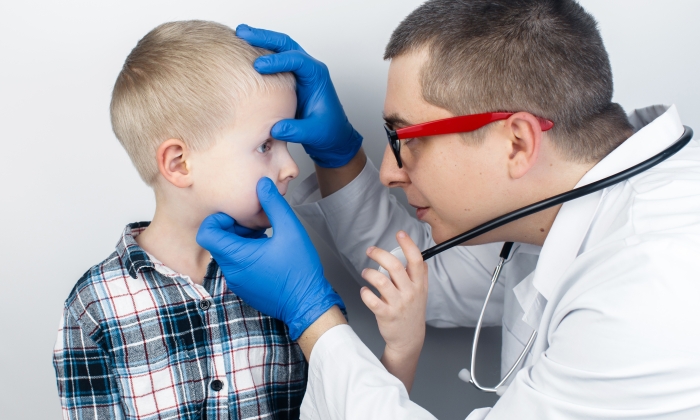
- Congenital glaucoma is a disease where the pressure inside your child’s eye is too high and can damage their optic nerve.
- The signs and symptoms that manifest for congenital glaucoma depend on the age of your child.
- Genetic testing and comprehensive eye exams are great ways to screen and find congenital glaucoma.
- Early diagnosis and intervention can help save your child’s eyesight.
- Even if your child loses some or all of their sight, there are resources for parents and children to adapt to vision problems.
When you hear the word “glaucoma,” you probably think it isn’t a disease that affects children. Unfortunately, childhood glaucoma does exist and some children can even be born with it. Congenital glaucoma is a serious disease that can lead to significant visual impairment if it is missed and not treated early.
Understanding Congenital Glaucoma
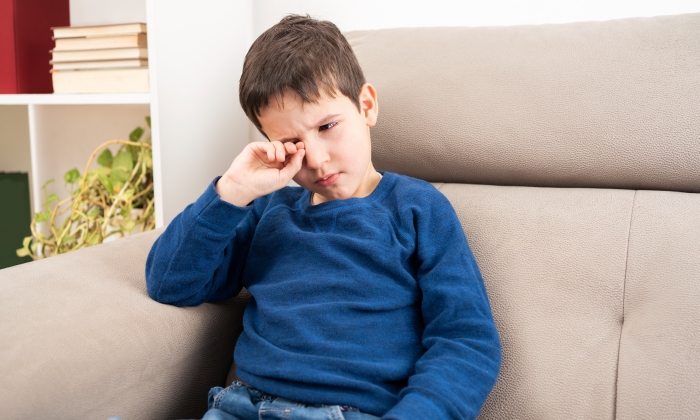
The eyes are complex organs made of multiple parts, including the aqueous fluid inside the main chamber of the eye. In healthy individuals, this fluid is regulated to maintain a safe intraocular pressure (inner eye pressure). If you have increased intraocular pressure, then the extra pressure can damage the eye and the optic nerve.
Primary congenital glaucoma is a rare condition where your child’s intraocular pressure is too high and it causes optic nerve damage. Primary diseases happen spontaneously and not because of prior disease or injury. Congenital diseases are present at birth, even if they may not be discovered at birth.
While a family history of glaucoma is a risk factor for primary congenital glaucoma, another risk factor is consanguineous marriage11. Gupta, V., Bhandari, A., Gupta, S., Singh, A., & Gupta, A.. Consanguinity and severity of primary congenital glaucoma. Journal of American Association for Pediatric Ophthalmology and Strabismus. 2022;26(3). https://doi.org/10.1016/j.jaapos.2022.01.010, which is a marriage between closely related individuals. The incidence varies depending on the region of the world, but according to a 2023 study22. Kaur, K., & Gurnani, B.. Primary Congenital Glaucoma. National Library of Medicine. 2023. https://www.ncbi.nlm.nih.gov/books/NBK574553, Western countries report congenital glaucoma occurring in 1 out of 10,000 to 30,000 births.
Early Signs and Symptoms of Congenital Glaucoma

Signs and symptoms of primary congenital glaucoma vary depending on the age of your child.
Infants
In the early stages of infantile glaucoma, signs and symptoms can include:
- Excessive tearing (epiphora)
- Light sensitivity (photophobia)
- Constantly closing their eyes shut
If the disease is allowed to progress and it gets worse, other signs and symptoms may appear, such as:
- Corneal clouding
- Corneal enlargement
- Enlarged eyes (either one or both)
Older Children
In older children, signs and symptoms of juvenile glaucoma can include:
- Frequent blinking
- Redness of the eye
- Vision problems
- Headaches
Some of these can be signs of other eye diseases, so it’s important you take your child to a pediatrician or pediatric ophthalmologist. They will be able to perform a differential diagnosis, which is the process of discerning between conditions that have similar signs and symptoms.
If you ever have any questions about your child’s eyes or they report that their eyesight has changed, contact your child’s pediatrician or ophthalmologist.
The Diagnostic Process
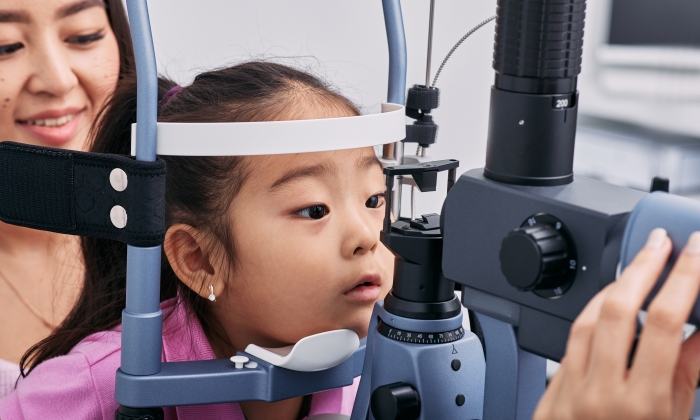
When it comes to diagnosing congenital glaucoma or other eye problems, a comprehensive eye exam is key for your child.
Eye Exam
What is done during an eye exam depends on your child’s age, as infants cannot cooperate as much with certain eye examination techniques. For example, your infant can’t do the visual acuity test that your grade school child could do.
It’s important to communicate with your pediatrician and your pediatric ophthalmologist as to what eye exams are available at what age. Some of the tests an ophthalmologist may do to diagnose congenital glaucoma include:
- IOP (intraocular pressure) measurement
- Gonioscopy (exam to see if where your eye fluid drains is open or closed)
- Inspection of the optic nerve
If your child is too young to cooperate with these and other tests, then your ophthalmologist may want to use anesthesia to sedate your child and do the exams. While it may seem like a lot for some of these exams, early detection and treatment can save your child’s eyesight.
Reporting Family History
It’s important to report any family history of glaucoma or consanguineous marriage to your pediatrician or pediatric ophthalmologist, as they will be looking out for possible glaucoma signs early on.
Treatment Options
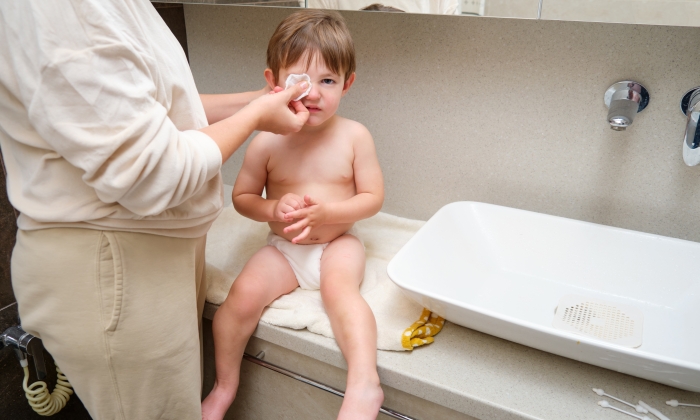
Treatment options vary depending on the age of your child and the severity of the pediatric glaucoma. Surgery tends to be the preferred method of treatment, but non-surgical interventions may be the better option depending on what your ophthalmologist thinks.
Medical Interventions
When it comes to first-line interventions, medications are the go-to to help your child. The medicines used will vary depending on what’s safe for your child’s age and how the ophthalmologist wants to address the increased intraocular pressure.
Medications used will either decrease the amount of eye fluid made or help increase the amount of eye fluid that leaves the inner eye. The medicines prescribed come in a variety of forms, including eye drops, oral medications, or topical ointments.
Surgical Procedures
There are a variety of surgical procedures33. Okorie, A. Y., & Madu, A.. Diagnosis and Treatment of Primary Congenital Glaucoma. American Academy of Ophthalmology. 2010. https://www.aao.org/eyenet/article/diagnosis-treatment-of-primary-congenital-glaucoma that can be used to alleviate congenital glaucoma when medications fail. The first two surgery options are a goniotomy or trabeculotomy.
Both surgeries are different approaches to help drain more of the aqueous fluid. While both surgeries have success rates above 90%, both surgeries may be needed to help decrease your child’s inner eye pressure.
Should both of these surgeries fail to resolve your child’s glaucoma, the other options present include creating a shunt or a trabeculoplasty. Shunt creation is a surgical procedure where a new pathway for the excess fluid is created in the eye. A trabeculoplasty is a laser surgery is used to treat problem areas in the part of the eye where fluid is drained known as the trabecular meshwork. This is sometimes combined with a trabeculotomy for possibly higher success rates.
Ongoing Care
Regular follow-up visits are vital for caring for your child with congenital glaucoma. Regular eye visits will allow the ophthalmologist to monitor your child’s eye pressure and their visual development. By seeing the changes in eye pressure and visual development, your child’s treatment plan can be adjusted to help prevent further vision loss and childhood blindness.
Living with Congenital Glaucoma
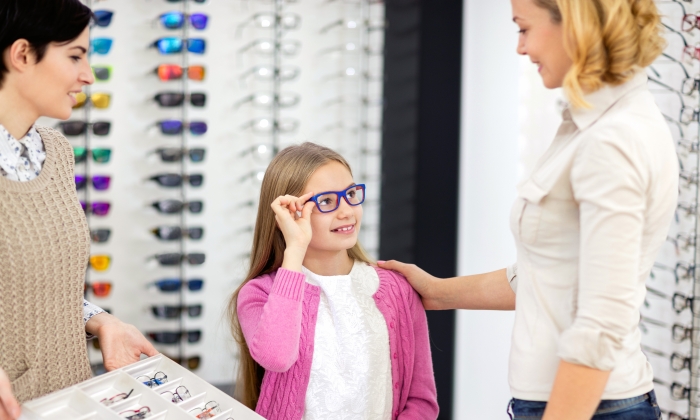
Learning how to help your child navigate this disease and any vision loss they may have can seem like a monumental task. But educating yourself and finding the right resources will help.
Education
Educating yourself about childhood glaucoma is a great first step in helping deal with a diagnosis. Asking your pediatrician about the disease and what to do can help you gain a sense of control over the situation.
Resources
Your pediatrician may be able to connect your family to local resources and organizations that can help you and your child navigate the stresses and challenges of childhood glaucoma.
Your child’s needs may vary depending on their visual prognosis. For example, your child’s vision could be impaired enough that they need to go to a school that specializes in visually impaired or blind students.
Connecting with other parents of children with glaucoma could be useful for you as a parent. Dealing with the realities of childhood glaucoma can be an extra strain on you as a caregiver and that extra strain could leave you stressed or at a loss of what to do. Other parents who are currently dealing with children going through the same disease process could help alleviate some of this stress with a sense of community.
While your child may suffer from glaucoma, it’s important to remember that your child is just as wonderful as a child without glaucoma. They are still an amazing human being who has a lot of potential, just like every other kid. Your love and support will help make the difference they need to succeed in this world.
Prevention
Even though congenital glaucoma is present at birth, there are some ways to help prevent it. Remember that one of the major risk factors for congenital glaucoma is family history, and we thankfully have plenty of ways to learn about our family history.
Family History and Genetic Testing
We may know some of our family history, but it isn’t uncommon to find out a family member actually has a disease we didn’t know about. If your family keeps track of who has what diseases, ask family members and build a proper family history list for both parents.
Of course, some diseases may not be visibly apparent or you may have a family member who is a genetic carrier for a disease only. You and your partner should talk to a doctor about genetic counseling before becoming pregnant if possible.
If the genetic results come back positive for glaucoma, then it would be important to discuss these results with your doctor. If the risk for congenital glaucoma seems too high for you and your partner, then you should discuss with your doctor if family planning would be best for you both.
Should you already be pregnant, then talk to your OBGYN about what genetic testing is possible for your child and when it can take place.
FAQs
How does primary congenital glaucoma affect a child’s overall eye development?
Congenital glaucoma affects your child’s eye development due to the elevated intraocular pressure. In healthy children, their eyes will naturally increase in size at a healthy rate alongside the rest of their body. With childhood glaucoma, the eyes will increase in size faster due to the stretching done by the increased eye pressure. The high pressure also permanently damages the optic nerve, leading to vision loss and even blindness.
What are the long-term complications associated with untreated primary congenital glaucoma?
The primary long-term complication of untreated glaucoma is vision loss, up to complete blindness. Should your child suffer some vision loss then start getting treatment for it, it may prevent further vision loss. However, that prior vision loss cannot be reversed.
What are the challenges faced by children with primary congenital glaucoma in terms of education and daily activities?
Congenital glaucoma affects your child’s vision, with the severity of the vision changes and the age that the vision changes affecting the challenges your child will face.
Text-based educational sources become more difficult or impossible to implement since your child has trouble seeing the letters or words on pages or screens. Teaching your child to read text-based material may prove difficult or impossible if they have trouble seeing the letters and words associated with the corresponding sounds and ideas.
Braille may need to be taught and used by your child if text-based materials are not usable. A school for the visually impaired or blind may be needed if your child’s school is unable to accommodate your child’s visual needs.
If your child can’t see properly, then normal tasks like navigating to certain rooms in your home or identifying household objects may prove more difficult or impossible without aid.
Can primary congenital glaucoma be completely cured, or is lifelong management required?
Primary congenital glaucoma is not completely curable as of right now. If your child is diagnosed with it, they will have to manage it for the rest of their life. The good news is that there are a variety of medications and surgeries available to your child to help them.
References
- Gupta, V., Bhandari, A., Gupta, S., Singh, A., & Gupta, A. (2022). Consanguinity and severity of primary congenital glaucoma. Journal of American Association for Pediatric Ophthalmology and Strabismus, 26(3). https://doi.org/10.1016/j.jaapos.2022.01.010
- Kaur, K., & Gurnani, B. (2023, June 11). Primary Congenital Glaucoma. National Library of Medicine. https://www.ncbi.nlm.nih.gov/books/NBK574553
- Okorie, A. Y., & Madu, A. (2010, March). Diagnosis and Treatment of Primary Congenital Glaucoma. American Academy of Ophthalmology. https://www.aao.org/eyenet/article/diagnosis-treatment-of-primary-congenital-glaucoma
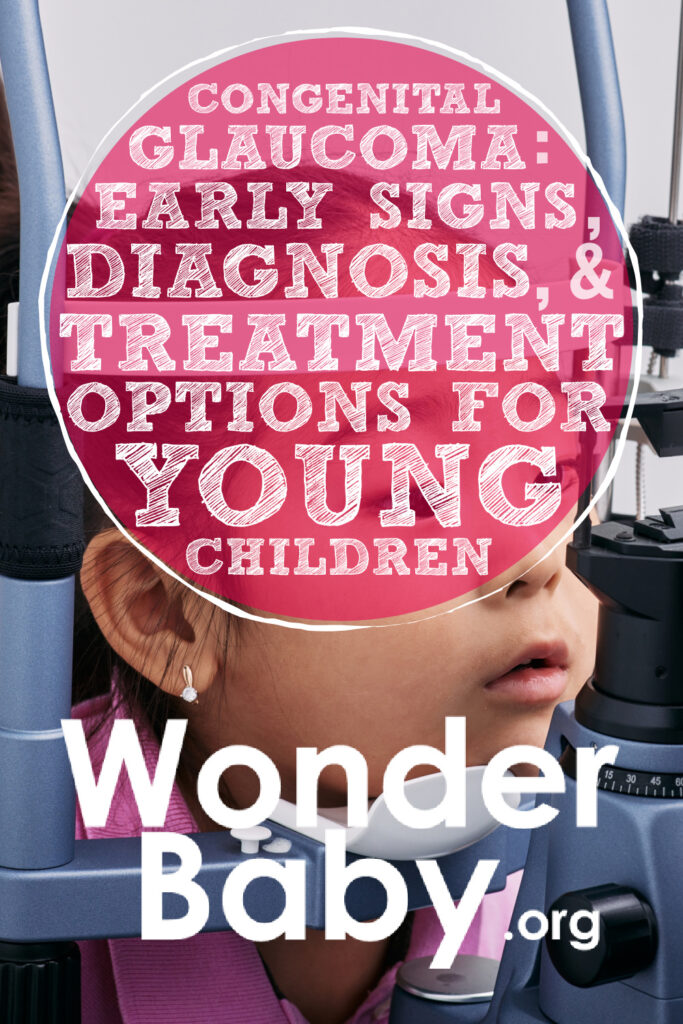
The information WonderBaby provides is not intended to be, and does not constitute, medical or other health advice or diagnosis and should not be used as such. Always consult with a qualified medical professional about your specific circumstances.
Related Posts

Eye Conditions and Syndromes, Visual Impairment
Neuralink Announces Plans to Restore Sight to the Blind with Brain Chip
Elon Musk’s company Neuralink has announced plans to begin human trials of its new “Blindsight” brain chip by the end of 2025.

Visual Impairment
The Gift of Understanding: How a Young Child Helps His Blind Father Navigate Life
When a parent is blind, it’s natural for people to wonder how their sighted child will adapt. Will they struggle to understand their parent’s needs? Will they feel burdened by...

Braille and Literacy, Toys, Visual Impairment
24 Braille Toys for Kids Who are Blind
Everything from alphabet blocks to raised line coloring pages and activity books to puzzles to card and board games... and so much more! And it's all in braille ready for...